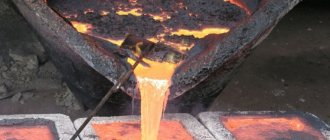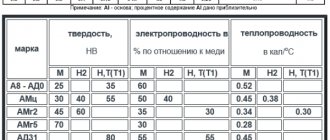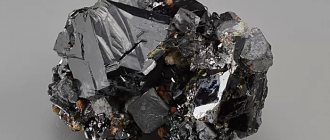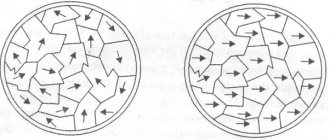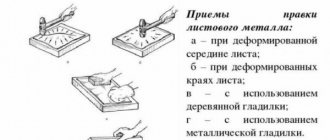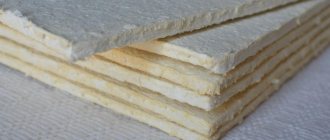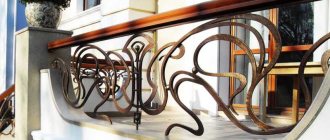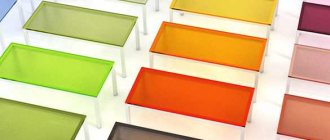Markings on spoons
Modern industry does not produce devices from precious metals for mass consumption due to their fragile structure and high cost. To improve the quality and increase the service life of products, various metal alloys are used, giving an external resemblance to gold or silver.
High-quality tableware is indicated by markings, thanks to which you can determine the alloy material used to make the product. Domestic manufacturers, when minting a mark on a spoon, use the following designations in marking:
- MELCH (MN) – cupronickel alloy;
- MNC – analogue of cupronickel – nickel silver;
- AL – aluminum;
- STAINLESS – made of stainless steel.
Some devices are covered with a thin layer of precious metal on top. In this case, a double mark is applied, which includes an indication of the sample number. Silver spoons are marked using the numbers 925.
Many buyers confuse nickel silver devices with nickel silver alloy, which is explained by the high degree of external similarity of the materials. Their difference is that by adding manganese, a cupronickel silver product is obtained, and nickel silver is an alloy that includes zinc. The basic basis of both materials is the same - it is copper with nickel. Having studied the markings, the buyer will be able to find out the composition of the MNC alloy on the spoon, what it is, and how much such spoons cost.
Purpose of markings on spoons
Markings are made so that people know what cutlery is made of. The capital letters used to mark Soviet spoons and forks represent the names of the metals that make up the alloy. The main types of brands used by industry in the USSR are presented in the table.
This option means cupronickel
A slightly different variety of the same metal with the addition of zinc. Another name is nickel silver
This abbreviation means aluminum and its alloys
The inscription stands for stainless steel
Silver products are marked with 925 and 999 purity. Antique lovers are advised to be careful when handling pre-revolutionary items. At that time, cutlery was covered with only a thin layer of precious metal.
Currently, spoons and forks with added zinc have not been produced for a long time, so this marking is no longer relevant. Previously, this metal was used to give products a characteristic shine. Today it has been established that this substance on cutlery can cause serious harm to human health.
Many Soviet citizens were sincerely convinced that such cutlery was made of silver, and purchased them with the aim of investing in the precious metal.
What does MNC mean on cutlery?
The mark on the spoons indicates what material the item is made from. The abbreviation MNC stands for simply:
- copper (70%);
- nickel (29%);
- zinc (1%).
In everyday life, an alloy consisting of these chemical elements and designated MNC is called cupronickel. In Soviet times, cutlery made from it was very popular. It was customary to give items that looked very similar to silver to close friends and relatives. The reason for the gift was usually important events in people's lives: a wedding, a housewarming, the birth of a child.
In some regions there was a tradition of giving a “silver” spoon at the christening of a newborn. The shiny cutlery looked impressive. They were traditionally used only on holidays, when setting the table. Such things were given great importance. However, over time, cupronickel, unlike precious metal, darkened and became cloudy, and the products lost their marketable appearance. The alloy deteriorated especially quickly when exposed to moisture if the items were stored in a damp place.
From the abbreviation MSC you can find out what materials the cutlery is made from
How is nickel silver indicated on cutlery?
It is not difficult to find out from what alloy certain cutlery is made. Classic cupronickel is marked MN (copper-nickel), and the numbers next to the abbreviation will indicate the percentage of nickel.
Brass is marked with the letter L. In this case, as already mentioned above, the number next to the abbreviation indicates the percentage of copper.
Nickel silver is indicated by the marking MNC , next to which there are two numbers at once (for example: MNC 15–20). The first indicates the percentage of nickel, and the second indicates the zinc content.
Important: a conscientious manufacturer labels all cutlery. An exception to the general rule is perhaps a table knife: the only marking on it is usually the grade of stainless steel from which the blade is made. But on the handle there are often no marks about the material from which it is made.
@antyk_old
“What does the abbreviation MNC on a spoon mean?
Spoons marked MNC are a valuable gift that every hostess will appreciate. There is no shame in serving them to the table, even if the people gathered around it are not poor. And all because it is almost impossible to distinguish such spoons from noble silverware. But what kind of MNC is this? What does the mark say? (quote).
Photo from setafi.com
After reading this introduction, I couldn’t put it down. Moreover, somewhere deep in my body, vague suspicions had already begun to ferment about the presence of something similar in my cutlery, which had passed to me from the caring, thrifty hands of my grandmother and mother. And what’s more, in parallel with this, somewhere important there was a feeling of joyful possession of no less than a rare piece of silver from the royal family! :)
So, read on:
Story
Silver spoons appeared in antiquity - in Ancient Greece and Rome. In the Middle Ages, silverware was mainly used by the nobility and the king's court. They became more widespread during the Renaissance. Then an interesting custom arose to give so-called apostolic spoons for christenings. The handles of the spoons were decorated with images of saints, Jesus and the Virgin Mary.
Silver teaspoons
Richer godparents gave a couple of spoons, and eminent and noble birthday people received a full table set for 12 items.
The child was usually given a spoon with the name of the apostle after whom he was named.
Not everyone could afford such a gift. Therefore, the proverb appeared: “He was born with a silver spoon in his mouth.”
The custom of decorating cutlery spread in the Baroque era, when spoons began to be decorated with complex patterns, landscapes and other images began to be applied to them.
In Rus', silver spoons appeared at the end of the first millennium. In 998, Prince Vladimir's squad received spoons as a gift for converting to the Christian faith and abandoning paganism.
In Russia, a spoon was a good gift. It was given not only as a gift, but also in honor of the child’s admission to the gymnasium, and to newlyweds for a wedding. A wealthy family stocked up their daughter's cutlery as a dowry. It was usually passed down from generation to generation.
How to identify silver metal by stamp
Silver colored metal in vintage cutlery, antique accessories and tableware is often passed off as silver. We will help you identify metal, alloy, silvering or other metal coating by various brands and markings of devices.
Let's start with simple three rules:
- Modern inexpensive appliances are made of stainless steel. Cupronickel is also used and is more expensive!
- Serving items are not only silver-plated, but also chrome-plated. Chrome produces a non-tarnishing metallic sheen, while silver will always darken. When worn, chrome plating peels and chips, sometimes bubbles, but silver plating simply rubs off and very aristocratically reveals the metal underneath (brass or nickel in the case of a gold base, steel - gray-silver)
- Cupronickel, a unique alloy that is valued as highly as high-quality silver and sometimes even more, since it has no taste, does not wear off, is safe and fully matches the color of silver. Cupronickel is an alloy of nickel, zinc and copper. In English it is called nickel silver (nickel silver), in German neusilber (new silver) and in French maillechort (in honor of the inventor). In Scandinavia it's just NS. But the fact is that, in its properties, cupronickel is very similar to silver, therefore, when it was invented, that’s what it was called - New Silver.
Here we present in alphabetical order the markings and hallmarks of “silver” color alloys and platings that have been used throughout the world on antiques and collectibles, particularly jewelry, cutlery, and tableware. If we say not a silver alloy, it means there is no silver (Ag) in it. This means that this is a type of cupronickel, and depending on the ratio of the components of the alloy, it can have more than 100 shades of gray-silver color!
- Afghan Silver: Another name for cupronickel, nickel silver.
- African Silver: this was the name given to some English silver plated wares between 1850 and 1900.
- Alaska Metal: trademark for silver-plated imitation silver cutlery since 1908.
- Albu Silver: silver plated copper products produced in England since 1880.
- Alpaca or Alpacca, ALP, Alpacca Prima NS: cupronickel, another name for nickel silver, was used as a trademark for Berndorf AG, Austria. Now used in Germany, Scandinavian countries and Mexico.
- Aluminum Silver: Trade name for a non-silver alloy, used by Daniel & Arter of Birmingham.
- Argentium Argentine Plate: cupronickel!
- Argentum: cupronickel.
- Austrian Silver: cupronickel.
- Bengal Silver: Another brand name for a non-silver alloy, used by Daniel & Arter of Birmingham.
- Brazil Silver and Solid Brazil Silver: Other names for cupronickel, also called German silver. This alloy does not contain silver at all!
- Bristol Silver: A trademark for a non-silver alloy that looks remarkably like silver, produced from 1895-1915.
- Coin Silver: This is a mark for items that were made from melted down silver coins. There has never been a standard or legal requirement for coin silver. It is virtually impossible to find coin silver marked on dishes, jewelry or cutlery made during the 1850-60s. You will, however, find this brand in reproduction. There was a time during the 1920s-1930s when some jewelry and other small items were regularly marked coin silver, from Southwestern Native Americans and Mexicans. Some other and similar marks are coin, pure coin silver, standard, and sometimes dollar. During the minting process, coins were alloyed with a hardening agent added to help resist wear. The coins had a silver content of 900/1000. Sterling standard is 925/1000 or softer. In the early 1800s, there was a shortage of silver ore and, in order to curb competition with American silversmiths, there was a refusal of foreign sources to sell bullion to America. Silver coins were very popular in the 1850s and 1860s. The decline in silver coin smelting began in the late 1860s when silver sources were discovered in Nevada and the US government began requiring customs duties and taxes to be paid in coin or bullion.
- Continental Nickel Silver: cupronickel.
- Empire Art Silver: Trademark for a non-silver alloy, used by the E & J Bass Company of New York, from 1890-1930.
- England Silver: cupronickel.
- EPNS and EPBM: Electro-plated new silver - such products are made by electroplating with silver! This was an inexpensive way to make "silver" by depositing a layer of metal electrically, namely a thin silver coating on a nickel base. Products marked EPBM are made by Electro-Plated Britannia Metal, by electroplating a layer of metal onto pewter or nickel silver products.
- German Silver: This is the most confusing marking and the most common marking you will find for the silver-white alloy made of copper, nickel and zinc. That is, it’s cupronickel! Alloy items with this marking do not contain any silver, however, there are many sellers who try to call items with these markings as real silver, but this is not the case. However, “German silver” can be polished and will shine just like sterling silver.
- Gun Metal: An alloy of bronze generally used to make weapons and other industrial products. This marking is also used to describe other dark gray metals.
- Japanese (sometimes Laxry) Silver: Another brand name for a non-silver alloy, used by Daniel & Arter of Birmingham.
- Mexican Silver: This is an unspecified grade and there is no guarantee of silver content. Most likely it is cupronickel, nickel silver.
- Nearsilver: Traditional name for nickel silver, cupronickel, used by unknown manufacturers.
- Nevada Silver: Another brand name for a non-silver alloy, England.
- New Silver, or NS for short: aka new silver, aka cupronickel.
- Nickel Silver: cupronickel, and by the way, this (and any of our) alloys, resembles sterling silver. We remind you that it consists of copper, zinc, and nickel. And has no silver content.
- Norwegian Silver: The traditional name for cupronickel used by WG&S.
- Oregon Silver: Silver plated items in England around 1880.
- Paktong, Pakfong, Baitung, Paitun.: an obsolete name for an alloy from China, cupronickel.
- Panama Silver: This mark is found on cutlery made from cupronickel.
- Pearl Silver: cupronickel silver cutlery.
- Potosi Silver: Brand of cupronickel used by WG&S.
- Prima NS: Another name for quality cupronickel, nickel silver, was used as a trademark in Austria. Now used in Germany, Scandinavian countries and Mexico.
- Siberian Silver: A mark that is found on some English silver-plated copperware in the late 1800s.
- Silvanir and Silverine: Two different brand names for non-silver products manufactured by Nov-E-Line Mfg. Co. of New York in 1890-1910.
- Silveroin: Traditional name for non-silver ware of Bristol Mfg. Company of Attleboro, Massachusetts circa 1895-1915.
- Solid Yukon Silver Warranted: Traditional name for silver plated items manufactured by the Raymond Mfg.Co of Muncie, Indiana, not produced after 1920.
- Sonora Silver: Brand of cupronickel used by Walker & Hall, Sheffield, England.
- Sterline: Traditional name for non-silver items of James E. Blake Co of Attleboro, circa 1902.
- Sterlon: Traditional name for non-sterling silver items from Milton Schreiber of New York, first used in 1949.
- Tutenag: An obsolete name for an Indian metal alloy related to cupronickel. This mark was also used to describe zinc coming from India.
- Tyrol Silver: cupronickel.
- Utah Metal: A common name for non-sterling silver cutlery from Utah.
- Venetian Silver: traditional name for non-silver items from Deykin & Sons, Birmingham, England.
- Wolf Silver: Common name for non-sterling silver cutlery.
- Yukon Silver: Common name for non-sterling silver cutlery.
What does MNC mean on cutlery?
Many people are interested in what the abbreviation MNC means, minted on tableware. Such a mark on a spoon or other device stands for copper-nickel-zinc. This alloy is called nickel silver. The use of zinc, in addition to the attractive appearance and practicality of the product, is characterized by a reduction in the cost of production. Translated from English, the name of this alloy means “new silver”.
Devices made of nickel silver in its pure form have an unpleasant metallic taste and smell. Therefore, they are coated with silver or gold plating with a thickness of at least 0.5 micrometers.
In accordance with GOST, the designation on sets of silverware is provided if the coating layer is at least:
- 24 micrometers for spoons with forks and knives, as well as dishes;
- 18 micrometers for cup holders.
Devices with gold or silver plating are an excellent gift for any person, regardless of age or gender, social status, or religion. Such gifts are given in the following cases:
- infant baptism;
- entering a university or obtaining a diploma;
- conclusion of a marriage;
- birth of the first child;
- silver or golden wedding anniversary;
- anniversaries and other celebrations.
It has long been believed that a donated silver spoon will bring:
- newlyweds - a long, happy life in love and harmony;
- students – successful mastery of science;
- babies - strong and healthy teeth.
Giving a fork as a gift was considered a bad sign, prophesying future misfortunes.
What is ZiSh MNTs 15-20
What does this stamp “ZiSh MNC 15-20” mean? Having understood this, we will understand what kind of spoons these are and where you can buy them.
Firstly, MNC is a designation for the material from which spoons are made. Stands for copper-nickel-zinc. Accordingly, MNC is an alloy of copper with nickel and zinc, it is called nickel silver (literally from German “new silver”). Can not understand anything? It seems that the cutlery has always been cupronickel, but here it’s some kind of nickel silver. It is not for nothing that we indicated the name of the nickel silver alloy in the form of a link - you can read about it there, and here is also a link to information about the cupronickel alloy (copper-nickel). The links tell you what it is and what you eat it with. In a nutshell, silver-plated products made from MNC (nickel silver) are called cupronickel because they were once made from cupronickel too. But cupronickel had a more beautiful name, and it was valued more, and so it stuck - cupronickel cutlery is made not only from cupronickel, but for a long time they have not been made from cupronickel at all, but they are still cupronickel. Here we have roughly figured it out, you can read more in detail using the links above if you are interested in these points.
Secondly, 15-20 is nothing more than a grade of nickel silver alloy. Specifically in this case, 15-20 means that this is an MNC alloy, which contains 15% nickel and 20% zinc and, accordingly, about 65% copper.
Thirdly, ZiSh is an abbreviation for “Shevchenko Plant”, i.e. the name of the manufacturer of these same cupronickel cutlery. It is located in the city of Volnyansk, Zaporozhye region, and produces cupronickel silver cutlery and other products to this day. Well, yes, in fact, it’s usually written ZiSh (in Ukrainian), but they say that “ZiSh” is also found.
Zish NERZH
If you use the cutlery described above, then you have probably also seen the inscription “ZiSH Stainless Steel”. This is not a mark, but an inscription made by engraving or simply a seal; in most cases, over time it disappears or becomes inconspicuous. It is found on the blades of table knives, while the ZiSh MNTs mark, as a rule, is nowhere to be found on the knives. This does not mean that the knives are made of stainless steel, but it does mean that the blades are made of it. And the handles of cupronickel knives are made of MNTs15-20 coated with silver, as are spoons and forks. It's just such a technological process. In modern devices there is also such an inscription, and also on the blades of knives, but it already looks like “SP STAINLESS”.
Designations
| Name | Meaning |
| Designation GOST Cyrillic | MNC15-20 |
| Designation GOST Latin | MHTs15-20 |
| Translit | MNTs15-20 |
| By chemical elements | CuNiZn15-20 |
| Name | Meaning |
| Designation GOST Cyrillic | Nickel silver |
| Designation GOST Latin | Heizilbep |
| Translit | Neuzilber |
| By chemical elements | Nieuilsilver |
How does MNC alloy differ from silver?
If you do not take into account the MSC mark, it is difficult for the average person to distinguish silver-plated devices from real silver. Below is a comparison table that will help you understand the main characteristics of the products.
| Characteristics | Silver cutlery | Products made from MNC alloy |
| Appearance | Silver or white color. | Silver or white color. |
| Strength | Fragile, easily bent and deformed. | Quite durable, resistant to physical impact and deformation. |
| Weight | Very heavy. | Lightweight. |
| Physical | Reflects light well; darken over time, heat up quickly, and are characterized by high electrical conductivity. | They do not fade or darken for a long time. They are characterized by weak thermal and electrical conductivity. Resistant to corrosion. |
| Reaction with iodine | They will darken. | Spots will appear. |
| With strong friction | No physical changes are observed, but a characteristic ringing sound appears. | Change in color, appearance of characteristic spots. Accompanied by a copper smell. |
By carrying out the proposed simple manipulations, you can reliably establish whether the device is made of silver or a nickel silver alloy. If you cannot find out the material of the product experimentally, you need to contact a jewelry workshop, where a specialist will quickly determine the composition.
It is impossible to scratch a silver product with a sharp object; marks with a characteristic brown or red tint remain on nickel silver.
There is an opinion that tableware made of nickel silver or cupronickel has a detrimental effect on health. To understand how true this is, it is necessary to clarify how each of the components individually affects the physiological functions of the human body:
- Nickel – accumulates in the pancreas and thyroid gland, enhancing the positive effect of insulin and maintaining low sugar levels. Microelement ions react with vitamin C, helping to increase the intensity of the oxidative process and accelerating the function of enzyme production. The accumulation of nickel in the body has a beneficial effect on the condition of hypertensive patients, keeping blood pressure normal.
- Copper is a vital element for humans, a deficiency or excess of which has a detrimental effect on health. The substance regulates the production of a huge number of enzymes and has an antibacterial effect.
When studying experimentally the effects of nickel silver alloy on the human body, it was found that with regular use of the specified tableware, youth and healthy skin are preserved for a long time, general tone and resistance to infectious diseases increase.
But if the integrity of the coating is damaged and characteristic scratches appear, cutlery made from the MNC alloy should be removed from use. A large intake of zinc into the human body can cause an allergic reaction. Heated copper is toxic and gives food a metallic taste. An excess of this metal in the body leads to poisoning.
Nickel silver alloy is used not only for cutlery. It has found wide application in the jewelry industry - for the manufacture of jewelry and accessories that are not inferior in appearance to silver. In addition, this alloy is used to make:
- medical devices and instruments;
- precision measuring instruments;
- automation for steam and water boiler units;
- electrical parts and microcircuits;
- various types of wire rod;
- decoration elements for paintings and much more.
Nickel silver has excellent dynamic properties, resistance to deformation and corrosion.
MNCSilver
“Properties and features of spoons marked MNC
This alloy itself is very similar to silverware. So much so that without special markings, it would be incredibly difficult to visually distinguish one from the other. But nickel silver is still much lighter and stronger than silver, thanks to which experienced users have a chance to determine “what is what” by picking up a spoon.
Nickel silver must be silvered, since the pure alloy gives it a metallic taste upon contact with food. That is why you should not use spoons that have deep scratches that have a slight yellow or reddish tint.
Cutlery made from this alloy is also highly resistant to corrosion, so it is easier to store and requires cleaning less often. But at the same time, caring for nickel silver spoons is still not without a number of limitations.” (quote)
So, nickel silver. But having further studied the interesting paper - an attachment to my spoons, something like a passport, I found some kind of discrepancy:
In the second photo there is a spread of the “passport”, where (attention!) it is written that the set includes “Silver plated dessert spoons from MELCHIOR”.
All. Deduction stuck :)
Where does the error take place, in the article, or, so to speak, in the “historical” document?) After all, in the article it is indicated in black in Russian that nickel silver and cupronickel are two big differences!
By the way, along the way, along with the “investigation”, I found another similarly marked spoon, which serves as an appendix to such a charmingly solemn couple of the Soviet period:
This tea pair was given to my grandmother for her birthday. From that moment on, neither the saucer nor the cup, as far as I remember, left the glass shelf of my grandmother's sideboard. For me, this porcelain has become an expensive item in memory of my loved one and a reminder of the bright and carefree days of childhood. Days filled with the smell of grandma's pies and buns, the cheerful chirping of sparrows in the flowering acacia bushes outside the window and the sounds of my grandfather's voice calling me to quickly get out of bed to run and watch “Well, just wait!” on TV. Grandfather turned up the volume and waited with a smile in the next room for me to hear the familiar intro music for my favorite cartoon and come running, thereby giving him untold pleasure.
And this is my favorite photo of the people closest and dearest to me - my family. Favorite, because in it my grandparents are still young, and my mother and brother are very young:
The Lednev family. Nikolai Dmitrievich, Maria Vasilievna, daughter Galina and son Yuri
Traditions were passed down religiously in the family. According to the ability to do everything with one’s own hands in the male line and thriftiness, thrift and preserving what can be passed on to children - according to the female line.
So I inherited another table set from my grandmother. In those days, in our country the presence of such things was very much appreciated. This set was also given to my grandmother for her birthday. Even the dedicatory inscription and date have been preserved:
But I inherited from my grandmother not only “antique” silver, but also some table “gold” :)
Here, again, is a dessert set. Unfortunately, the production date has not been preserved, but I think it is already the end of the 80s:
This is a great option for serving a festive tea table.
Mom also did not stay away from the family tradition:
Chic table set for 24 pieces with partial gilding.
The product is made of steel. This set is from a later period. I think probably early 90s. More likely, even received at work as remuneration. There were such difficult times after the collapse of the USSR.
These are the finds and discoveries I made, such a journey into the world of the past and my childhood.
I think, dear readers, many of you, somewhere on your distant shelves, will have a similar, carefully preserved memory. If the topic touched your heart, share photos and stories in the comments, I will be glad.
Yes! I almost forgot to post a photo of another “rarity”:
My main assistant in the “investigation”;)
This is my grandfather's old magnifying glass. You see, it even bears a quality mark. I want to say that the quality did not let us down - I would not have considered any letters at all without this wonderful tool.
That's it.
I look forward to your feedback. Have a good mood. Take care of yourself and your loved ones.
Source of quotes from the article: https://setafi.com/posuda/stolovye-pribory/mnts-na-lozhke-chto-eto/?utm_referrer=https%3A%2F%2Fzen.yandex.com&utm_campaign=dbr
Cost of spoons with a stamp
Giving a table set of spoons and forks made from MNC alloy as a gift is considered good manners. You can buy it at any jewelry store. An alternative way is to order online or from a collector. But you should beware of counterfeits: when making a purchase, you need to make sure that the product has the appropriate accompanying documentation.
The value and presentability of the table set will increase if the cutlery is beautifully arranged on satin linings and packaged in gift boxes. The cost of such a kit can range from 800 to 5000 rubles, depending on the following factors:
- degree of prestige of the outlet;
- Year of release;
- the percentage of nickel in the alloy (with an increase in the amount of this element, the devices acquire a light shade with a green or blue tint, otherwise the product is dark in color);
- presentability of packaging;
- external characteristics of the set (used or new).
Rare antique instruments made in Soviet or pre-revolutionary times can only be purchased from collectors or in antique stores. They are distinguished from modern products by the presence of three additional marks: the name of the master, the city of manufacture and the date of issue. The price of such sets reaches several thousand dollars. The cost of MNC cutlery is always lower than silver, but not significantly.
A low price should alert you; it may be an indicator of:
- low-quality alloy;
- small thickness of the applied layer of silver covering the product;
- high probability of counterfeit.
That is why you should be extremely careful when purchasing so as not to become a victim of scammers if you want to replenish your home “arsenal” with pleasant serving elements or give joy to friends and family.
Pros and cons of branded spoons
To determine the necessity and rationality of using this type of cookware, you need to consider its positive and negative aspects.
Spoons with a stamp.
The advantages are:
- quite affordable price with good external characteristics;
- Possibility of use in hot containers due to low thermal conductivity;
- strength and wear resistance.
There is also a drawback to such products. With prolonged use, their appearance noticeably deteriorates, stains and deformations appear.
For a long time there was talk about the dangers of this type of dishes for health. But this fact is not entirely true. Copper does release toxins when it comes into contact with hot foods. But tableware created in compliance with all the rules will not cause harm.
How to care for silver jewelry
Unfortunately, Argentum products tend to darken over time. This occurs, in particular, due to metal oxidation. To ensure that your rings always look attractive, they need to be cleaned from time to time. This simple procedure can be done at home.
- Simple dirt (sand, dust, cosmetics) can be easily removed with a hot soapy solution. Sometimes dishwashing detergent may work. After soaking the product for some time in a container with a solution, you should clean it with a soft brush.
- Rings without stones can be lightened using a 10% solution of citric acid or ammonia.
- It is recommended to give silver rings with garnet, amber, pearls and other stones to a specialist. However, if the product is slightly soiled, it can be placed in the potato mixture. To this end, pour grated raw potatoes with water and dip the ring in this liquid for a few minutes. After this, you need to polish it with a woolen cloth until it is completely shiny. You can also replace the potato mixture with a decoction of tubers.
Proper care of silver items will preserve their original appearance for many years.
How to distinguish from silver?
First of all, silver is a pure metal and does not contain any impurities, while cupronickel is an alloy that is more durable. Outwardly, they are very similar, so it is not easy to distinguish them. First of all, you need to take a good look at the spoon.
Main differences:
- silver is obviously heavier than cupronickel;
- reflects light well;
- becomes dull over time;
- conducts electricity and heat better, heats up faster;
- silver is more expensive;
- The mark of the product, if it is genuine, on silver is a hallmark, on cupronickel – letters.
If in doubt, dip a spoon in iodine, water, or rub with a lapis pencil. Any color changes prove that this is an alloy. The smell of the metal also indicates the presence of an alloy, since silver has no odor; just rub the product well to feel the aroma. You can run a needle over the product, if there is a scratch, it is an alloy.
If you are not sure, take the spoon to a jeweler. The most accurate way to determine the composition is with a chromium pin, which is dripped onto an object - the silver item is painted red.
How to distinguish cupronickel from silver
Since the properties and color of silver analogues are almost identical to those of the original, the only reliable way to distinguish one from the other is marking. Silver cutlery is marked only with numbers. This is a test by which one can judge the purity of a noble metal.
The second option is to compare the strength and thermal conductivity of cutlery, if you know for sure that one of them is silver. The fact is that cupronickel heats up worse because it has lower thermal conductivity. And it's also stronger.
Subscribe to our Social networks
Repair mark
A square divided in half.
1 description option. Near the wooden overlay there is a restoration mark - a rectangle divided in half. Such terminals had been installed for several years since 1928, while revolvers (triggers, springs, sights) worn out in the battles of the imperialist and civil wars were being repaired.
Option 2 description. Small repair marks - a rectangle divided in half (read “overhaul in 1932”, when they began to remake the sighting parts), which were placed since 1932 on revolvers produced earlier, i.e. The revolver with this mark was produced before 1932.
A diamond means a complete overhaul, which in turn means a complete or partial re-sorting of parts of the revolver. During the overhaul, they could change the drum and re-barrel, but this is less likely than simply replacing a worn-out trigger. The diamond sign is less common than a rectangle divided in half. Accordingly, it means a non-standard overhaul, or a special workshop. I think this sign indicates some kind of “fine” work on the revolver.
Is it worth buying ZiSh MNTs 15-20 from the ad?
This is a complex question, again it’s up to you to decide. It may well be that you will come across cutlery with the mark ZiSh MNTs 15-20, which someone simply had lying around as a dowry or something like that and no one ever used them, but what is the probability?
The silver coating darkens in air; after several years, devices should already be completely black if they have not been used. Unless they were stored in a hermetically sealed box, which is unlikely. Now there are many ways to pack it hermetically - at least banal cling film, but in the USSR this was not so easy, and fabric or newspaper does not help.
The declared service life of silver-plated cutlery is from 50 years under normal use, but such old things that are offered through advertisements with a 99% probability have been subjected to the most aggressive methods of cleaning and polishing before being sold. And the likelihood that the silver layer there is in good condition is extremely small, and the price they are asking for is not so low.
Old cupronickel cutlery may be interesting only as collectibles, but using them for their intended purpose is not entirely reasonable if you have no idea that these spoons and forks have survived since 1950, for example.
ZiSh MNTs 15-20 • ZiSh MNTs
- Advantages of our products
- Manufacturers
- Information
- Advantages of our products
- Manufacturers
- Information
Cupronickel cutlery ЗіШ today is produced under the Sribna Polyana brand!
Many of us have silver-plated cupronickel spoons and forks in our cutlery drawer at home or deep in our grandmother’s closet, with the stamp ZiSh MNTs 15-20 . Very often I want to buy more of these for myself or buy them as gifts for relatives abroad or in Ukraine.
You go to the Internet, type in a search engine something like “ZiSh MNC 15-20 price” and you find yourself on many advertisements where they offer to buy the same used cupronickel cutlery, which were produced in the mid-20th century.
Whether you buy these or not, of course, is up to you. But think for yourself, in normal countries, cutlery cannot even be returned to a store, just like medicines and other personal hygiene products.

